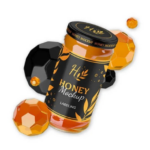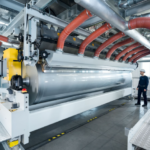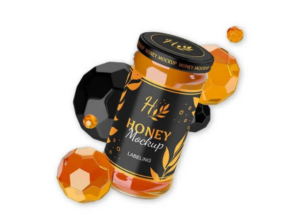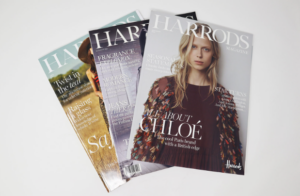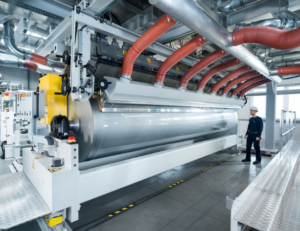If you want packaging that would extend the shelf life of your packaged food items, then you must go for vacuum packaging.
Don’t know anything about vacuum packaging? There is nothing to worry about.
By reading this article, you will learn everything about vacuum packaging as it comprises the description of vacuum packaging materials, their advantages and disadvantages, and so on. Let’s dive into it.
What Is Vacuum Packaging?
Vacuum packaging is a type of modified atmosphere packaging found around the world. Vacuum packaging is a procedure in which air is entirely removed from the interior of a package instantly before sealing the box.
Vacuum packaging was discovered by a German inventor named Karl Busch in the 1950s. He used the discovery for vacuum packaging meat products.
This procedure involves putting food products in a plastic film package (Vacuum packaging bag), removing air from the parcel using a vacuum pump, and sealing the packet.
Today vacuum packaging is generally used for long-period storage of dry foods such as cereals, nuts, cheese, cured meats, and smoked fish.
It is also used for short-duration storage of fresh foods, including meats, vegetables, and liquids.
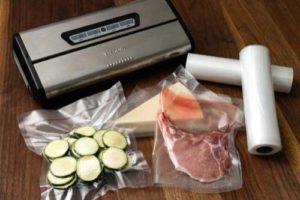
Vacuum Packaging
Why Is Market Demand for Vacuum Packaging Increasing?
The following factors mainly drive the increase in market demand for vacuum packaging:
- Elevated demand for hygienic packaging
- Consumer’ needs of longer shelf-life
- Swing towards easy-to-handle and handy packaging
- Development of parent industry
Which Plastic Material Is Suitable for Vacuum Packaging?
The vacuum packaging materials market is segmented based on material type and application.
Segmentation Based on Materials
The materials that are chosen for vacuum packaging perform specific functions, including:
- Protection from microbes
- Maintain the ambient temperature of packaged products, particularly food
- Provides aesthetic appeal in some instances
Based on materials, vacuum packaging is segmented into the following types:
- Polyethylene (PE)
- Polyvinylidene chloride (PVDC)
- Polypropylene (PP)
- Polyvinylchloride (PVC)
- Polyester (PET)
- Polyamide (PA)
These materials are selected based on the following characteristics:
- Flexibility
- Lightweight
- Mechanical strength
- Easy recycling
- Being odorless and hygienic
- Resistance to oil and fats
- Sealing capability
- Resistance to hot and cold temperatures
- Good barrier properties against gases
- Low-cost
Among the materials mentioned above, PET acquires a strong demand for vacuum packaging from the food & beverages industry.
The materials utilized for vacuum packaging must be sturdy enough to endure the vacuum and flexible enough to form around the food product.
The Material must have a very particular level of heat sensitivity. According to the heat sensitivity of the material, you should seal it during the packaging procedure, but also appropriate for moderate temperatures during cooking (e.g., 75°C).
Below a list of vacuum packaging materials is given along with their unique features:
- PET material:Best printing effect
- PA material:Low oxygen permeability
- PE material:inner Material and can touch the food directly
- PA/PE materials:It can withstand 120 ℃ high-temperature cooking.
Segmentation Based on Application
Based on applications, the vacuum packaging material market is segmented:
- Food and beverages
- Pharmaceuticals
- Industrial use
- Consumer use
Advantages of Vacuum Packaging
Vacuum packaging provides the following advantages:
- Substantial increase shelf life
- Barrier from external elements
- Minimal need for chemical preserves
- Quick and efficient
- The clear and visible outer packaging
- Reduced product loss
- Minimal up-front cost
- Affordable packaging option
- Excellent for freezer storage
Disadvantages of Vacuum Packaging
Though vacuum packaging is the best form of packaging that enhances the shelf life of packaged products, there are some disadvantages of vacuum packaging, including:
- External gases can boost the cost.
- Loss of preservation once the package has been opened
- Additional labeling is often required.
- Additional sealer attachments might be necessary based on each product.
- Essential vacuum packaging bags can be hard to open.
Vacuum Packaging of Food
Vacuum packaging is the best way to enhance the shelf life of food products. Food is packaged in vacuum packaging bags.
Food Vacuum packaging is best for seasonal items and food that tends to spoil quickly, like vegetables, lettuce, and meats.
It also works well for pasta, crackers, nuts, another other pantry items that get stale or soft when exposed to moisture and oxygen in the air.
Vacuum Food Packaging Offers the Following Benefits
- Vacuum packaging of foodsprotects them from freezer burn and dehydration. Freezer burn is not a hazard to your health, though it destroys the taste and texture of the food.
- Vacuum packaging keeps the food fresh for a longer duration by reducing air exposure.
- Vacuum packaging preserves food by inhibiting the growth of mold, fungus, and bacteria.
- Vacuum packaging offers year-round freshness to food items. It is best to store seasonal items, like tomatoes or berries, for use during the wintertime.
- It increases cabinet space. By vacuum packaging the food items, you can place them stacked or together on the side in the refrigerator; it provides space for more food items like cans and boxes.
- It can be employed to marinate and season food for added flavor.
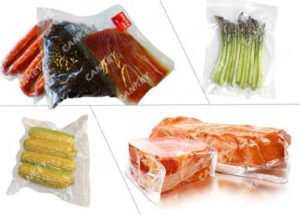
Vacuum Food Packaging
Vacuum Meat Packaging
Meat is mainly preserved by vacuum packing. Vacuum packaging of meat permits it to stay fresh for up to 3 – 5 times longer than the beef stored in supermarket-bought packaging like bags or plastic containers.
Vacuum meat packaging removes the oxygen from the meat. It minimizes the activity of bacteria that need oxygen and notably enhances shelf life.
Eliminating the oxygen significantly slows the meat maturation procedure, and the meat quality is maintained longer.
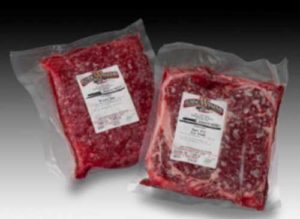
Vacuum Meat Packaging
Final Verdict
Are you looking for a packaging method to preserve seasonal vegetables and fruits?
Vacuum packaging will provide excellent results if you use the suitable Material for vacuum packaging. Vacuum packaging will be your ultimate partner in this regard.
You can use this packaging to preserve your food or other items for more extended periods. At Kingchuan, you can get any high-quality Material that will be best for vacuum packaging.

